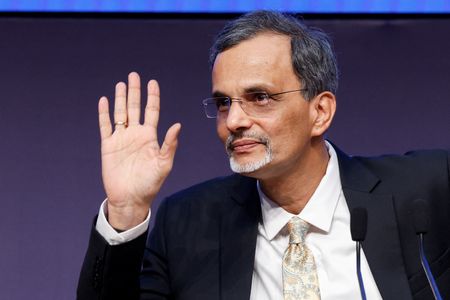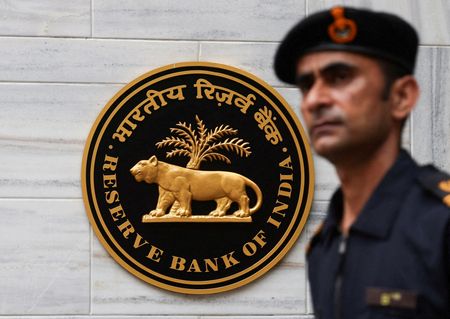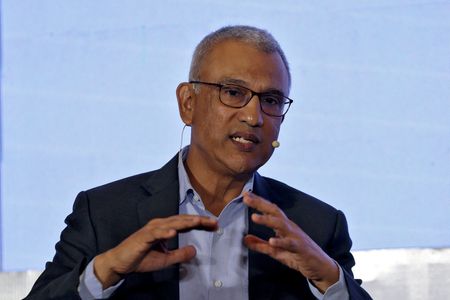By Vivek Kumar M and Bharath Rajeswaran
(Reuters) -India’s equity benchmarks advanced on Wednesday, as investors picked up stocks in anticipation of a U.S. rate cut later in the day, while a possible U.S.-China trade deal also boosted sentiment.
Lower U.S. rates typically make emerging markets like India more attractive to foreign investors.
The Nifty 50 rose 0.45% to 26,053.9 and the BSE Sensex gained 0.44% to 84,997.13. Both blue-chips settled less than 1% below their all-time high levels hit in September 2024.
Fifteen of the 16 major sectors logged gains. Mid-cap and small-cap indexes rose 0.6% and 0.4%, respectively.
Markets are pricing in a 99.9% chance of a 25-basis-point Fed rate cut, according to CME’s FedWatch Tool.
Overseas investors bought Indian shares worth 103.4 billion rupees ($1.18 billion) on Tuesday, provisional data showed, marking their biggest single-day purchase in four months.
“Optimism over U.S.-China trade talks further lifted confidence after both sides signalled progress toward a potential deal,” said Gaurav Garg, analyst at Lemonn Markets Desk.
U.S. President Donald Trump began the final leg of his Asia trip, securing a trade deal with South Korea on Wednesday, ahead of the meeting with his Chinese counterpart, Xi Jinping, to finalise a trade agreement later in the week.
Metals, oil and gas and energy indexes advanced 1.7%, 2.1% and 1.9%, ahead of the meeting, helped by expectations of trade truce between the world’s two largest economies and top consumers of metals and crude oil. [MET/L] [O/R]
Among individual stocks, Adani Energy jumped 5% after multiple brokerages reiterated their bullish outlook, citing robust growth across transmission, distribution and smart meters despite a quarterly profit drop.
State-owned Coal India fell 2.4% after posting a 30.3% drop in consolidated net profit in the September quarter.
HDFC Asset Management Company and Nippon Life India Asset Management lost about 4.3% and 5.2%, respectively, after India’s markets regulator on Tuesday proposed measures to simplify mutual fund fee structure.
(Reporting by Vivek Kumar M and Bharath Rajeswaran; Editing by Eileen Soreng, Nivedita Bhattacharjee and Harikrishnan Nair)










